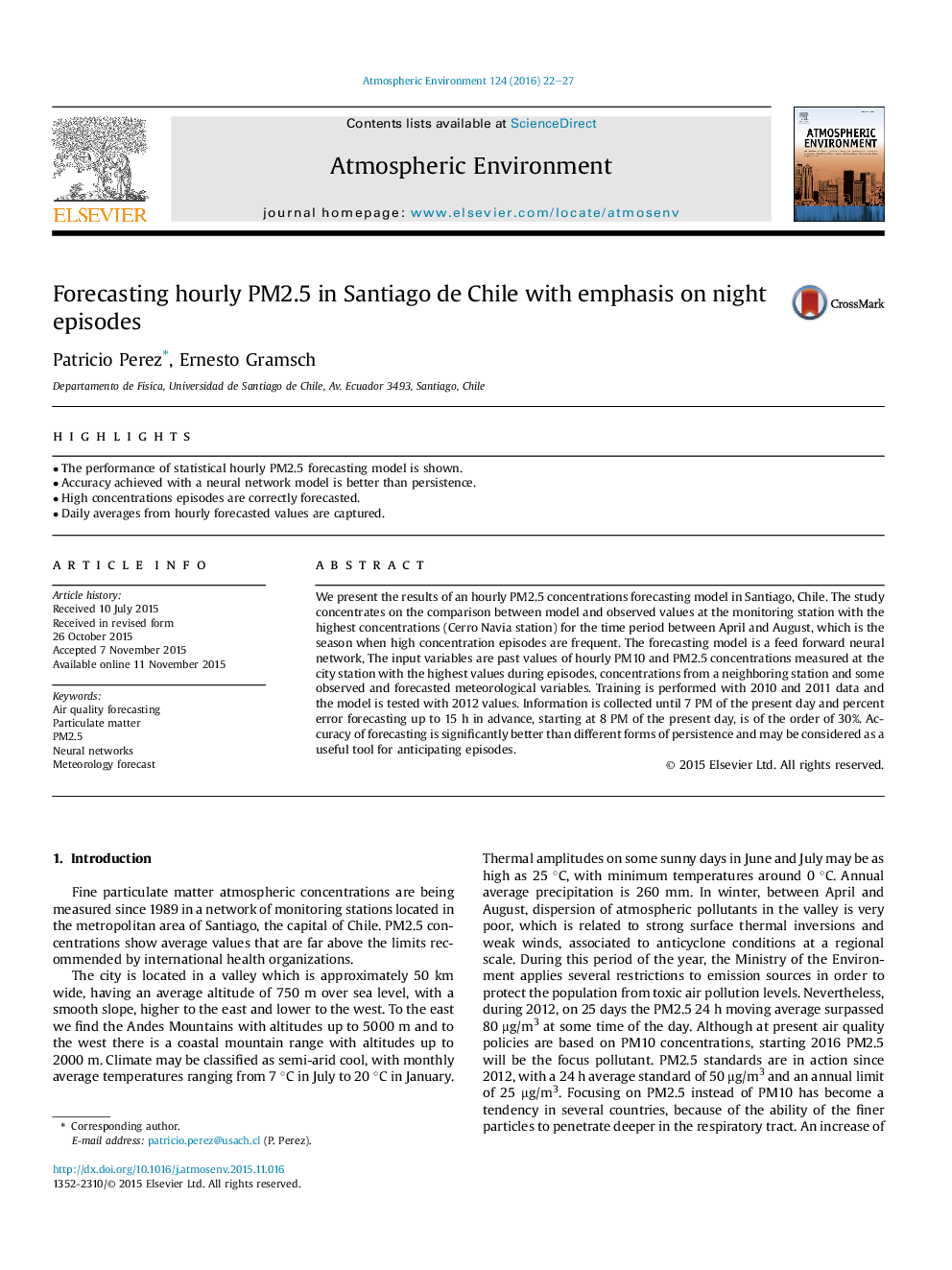| Article ID | Journal | Published Year | Pages | File Type |
|---|---|---|---|---|
| 6336927 | Atmospheric Environment | 2016 | 6 Pages |
Abstract
We present the results of an hourly PM2.5 concentrations forecasting model in Santiago, Chile. The study concentrates on the comparison between model and observed values at the monitoring station with the highest concentrations (Cerro Navia station) for the time period between April and August, which is the season when high concentration episodes are frequent. The forecasting model is a feed forward neural network, The input variables are past values of hourly PM10 and PM2.5 concentrations measured at the city station with the highest values during episodes, concentrations from a neighboring station and some observed and forecasted meteorological variables. Training is performed with 2010 and 2011 data and the model is tested with 2012 values. Information is collected until 7 PM of the present day and percent error forecasting up to 15Â h in advance, starting at 8 PM of the present day, is of the order of 30%. Accuracy of forecasting is significantly better than different forms of persistence and may be considered as a useful tool for anticipating episodes.
Related Topics
Physical Sciences and Engineering
Earth and Planetary Sciences
Atmospheric Science
Authors
Patricio Perez, Ernesto Gramsch,
